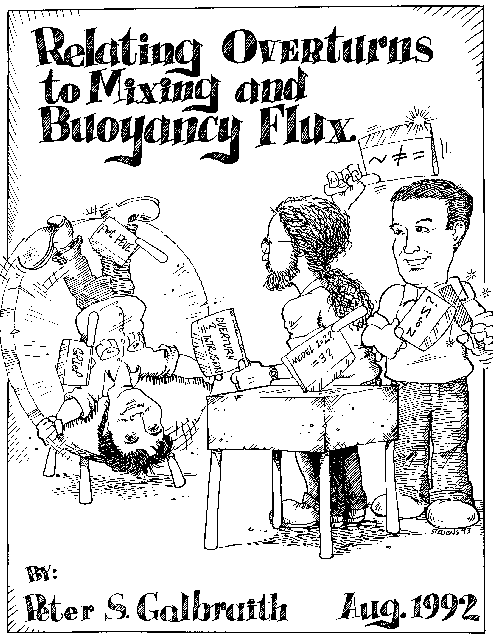
This parameterisation of mixing is separated in two turbulence cases: growing isotropic overturning scales and steady-state overturning scales with balanced inertial and buoyancy forces. The decay time is shown to be inversely proportional to overturn-scale shear and proportional to overturning time; this becomes proportional to the buoyancy period for turbulence in inertial-buoyancy balance, whether it be isotropic or not. Buoyancy flux is estimated from overturning scale quantities, which are much easier to measure than mixing at the smaller viscous and diffusive scales. Predictions of buoyancy flux and mixing efficiency compare favourably with laboratory turbulence data and to lake and oceanic data, provided that salinity- compensated intrusions can be excluded from the analysis. Overturn scales are subsequently used in the St. Lawrence estuary to estimate mixing rates; data suggest that solitons create more mixing at the head of the Laurentian channel than does the larger scale internal tide.
Peter is now working at Institute Maurice-Lamontagne in Mont-Joli, Quebec. He can be reached by e-mail at Peter.Galbraith@dfo-mpo.gc.ca